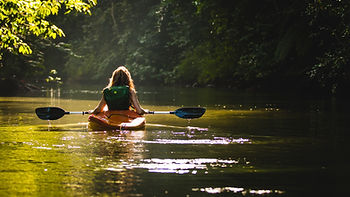Using Flow to Boost Resilience
- Felicity Baker

- May 12, 2020
- 3 min read
Updated: Dec 5, 2022
During challenging times, it can be difficult to prioritise the activities we love doing. There is always something else that needs our attention. However, as psychologists, we know that letting go of those activities that facilitate recovery from stress and challenge undermines our resilience, and over the longer term can diminish our health and wellbeing. Here we talk about making time for hobbies, interests and connection and using flow to boost resilience.
What is flow?
Flow is the experience of being completely absorbed in an activity with a feeling of energised focus and enjoyment through the process.
The term 'flow' was coined in 1975 by Mihály Csíkszentmihályi, a leading researcher on the psychology of happiness and creativity In an interview with Wired magazine he described flow as:
“being completely involved in an activity for its own sake. The ego falls away. Time flies. Every action, movement and thought follows inevitably from the previous one, like playing jazz. Your whole being is involved and you’re using your skills to the utmost”.
Why is flow important for resilience?
Research comparing high and low flow teenagers showed significant differences in the development of their psychological capital. The high flow kids tended to engage in more hobbies, sports and homework. They reported higher levels of psychological health and wellbeing, with higher self-esteem and stronger social relationships than the low flow teenagers who were more likely to hang out at the shopping centre and watch tv, focusing more on pleasure than gratification.
The distinction between pleasure and gratification is an important one. Pleasure-seeking tends to be non-productive, aimed at consumption and the satisfaction of biological needs, whereas gratification is about growing through our pursuits and building resources for the future.
According to positive psychologist Martin Seligman low flow activities, or activities associated with the pursuit of pleasure rather than gratification, whilst highly motivating often require little effort or focus and do not draw on our strengths. As a consequence, low flow activities can lead to self-absorption, lowered self-esteem and the experience of negative emotions. Watching television for example, whilst easy to do, has been associated with the experience of mild depression.
How can we get more flow?
The challenge we face if we want more flow in our lives is that the shortcuts to pleasure that are available to us are very appealing. For example, it is much easier to switch on a tv programme after work than it is to attend a dance class or do some gardening. When we are mentally or physically drained from work or home life, we might feel we don’t have time to get into hobbies and activities so we take the easy option, not realising that this is not helping us to be resilient.

In his book Authentic Happiness, Seligman highlights the broad variety of activities that can provide a sense of flow. These may be mentally stimulating or challenging, such as studying, reading, or problem-solving; they may be social activities such as singing in a choir, running together, or community gardening; they may be physical challenges such as sport, dance, or meditation.
What flow activities have in common is the sense of gratification they provide as they tend to:
Be challenging and require skill
Take concentration
Be associated with clear goals
Provide immediate feedback
Be linked to a sense of deep effortless involvement and control
And when we are doing them our sense of self vanishes and it can feel like time stops.
Although the state of flow has been associated with generating positive emotions, these are not normally experienced during the activity. Rather they emerge in retrospect as we look back on the activity, celebrate our successes or experience a sense of pride in what we have accomplished.
Barriers to using flow
There can be many deterrents to engaging in high flow activities: time constraints, fear of failure; the challenge of learning new skills that may take effort or self-discipline. These can all make it hard for us to get started.
It can be useful to think about how you can overcome those barriers. Try
Scheduling the activity
Letting others know so they can provide support, space, and encouragement
Finding ways of taking the first step, perhaps working out what equipment you need, or preparing a workspace
If the activity involves others, connect with them and make a plan together
Linking the activity to your values, thinking about how doing it will move you towards the life you want to live
If you found this helpful and would like to find out more about building resilience, check out our resilience and wellbeing solutions page. Or get in touch for a free consultation.





Comments